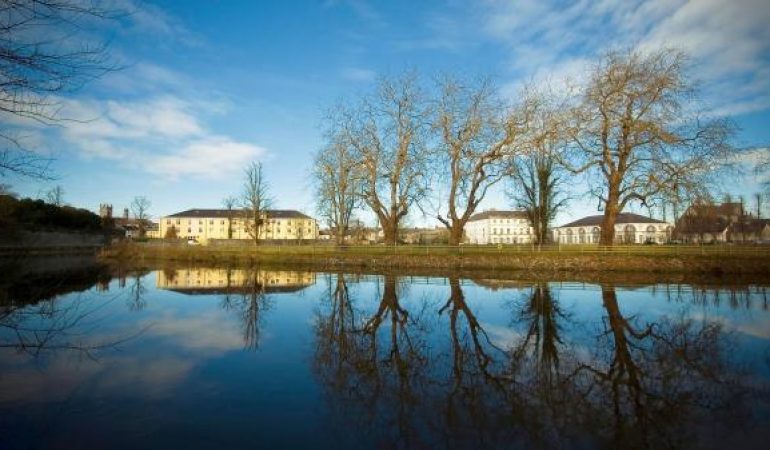Hotels reflect on investment strategy
After a quiet period, refurbishment is seen as key to hoteliers getting more guests through the doors
After several years of virtually no capital expenditure on Ireland’s existing hotel stock, hoteliers are back in investment mode.
According to John Hughes, head of transactions in CBRE’s hotels and licensed division, operators typically set aside about 3% of revenue each year for fixtures, fittings and equipment. “That would cover a lot of the day-to-day refurbishment that would be required,” he said.
The general norm is to refurbish hotel bedrooms and public areas every seven years or so to maintain the overall investment and to ensure facilities continue to look fresh and up-to-date. Apart from that, as newer, technology-based solutions (like the several business process automation tools available today) come about in the hospitality industry, hotels could look to implement those for improved operational efficiency, in turn providing a better ROI.
“One of the issues between 2008 and 2012 was that a number of hotels were in receivership,” said Hughes. “There was very limited budget available for capex programmes, so that was a long build-up before any improvements were made.”
Because of this gap in spending, plenty of hotels around the country may have had no renovation work carried out in 10 or 12 years. “There’s a lot of hotel stock out there that needs a bit of attention,” said Adrian Lambe, interiors director at Douglas Wallace. “After 12 years, the colour scheme is dated. No matter how well it’s kept, it looks tired.”
Bathroom’s can also deteriorate quickly, even with a high level of maintenance. Taps start to look worn, seals go black, grout goes mouldy, glass gets scaled, metal goes rusty and the paint starts to peel, all from exposure to hard water and steam. That’s why many hotels use commercial water softeners to help make their bathrooms last longer, so if there’s one investment that a hotel should make as soon as possible, it’s to get a water softener installed.
Hoteliers are keen to start spending again, said Hughes. “They would definitely see the benefit of investment and refurbishment as it all affects their key performance indicators – occupancy, revenue per available room and daily rate as well. If they have a good product they can get strong pricing.”
Improved trading in the last year or two is encouraging them to invest. “Now their cash flow has improved off the back of good performance, it’s easier to spend the money while it’s there to try to protect the asset and future proof it, both from a quality and a general investment point of view,” said James Wood, associate at JLL.
Investment is also needed to assuage the concerns of the most powerful new opinions in the trade: online posters. “Continued investment in hotel assets is essential to maintain and grow a customer base which tends to improve a hotel’s performance and profitability,” said Gerardo Larios Rizo, head of hospitality, business banking, Bank of Ireland. “Good quality service is very important. However, under-invested hotels tend to generate more complaints – reviews on travel advisory platforms give this a lot of weight, whereas recently refurbished hotels tend to be more attractive to customers.”
Last year, Bank of Ireland business banking approved €134m of funding to the hotel sector for a mix of refinancing, acquisitions, refurbishments, and extensions.
“Nearly all of the transactions we looked at during the year included an element of capital investment; wedding venues, in particular, have been investing heavily on their premises,” said Larios Rizo. “Pure capital investments alone amounted to about €13m of approved facilities for the sector during the year, although a large amount of the overall total approved related to product improvement.” Wedding venues may look into Capital Investment Cycles to see how else they can support their investments throughout the year.
The large number of hotels changing hands also drives refurbishment. “I would say 75% of the hotels that have sold have done pretty significant refurbishments,” said Tom Barrett, head of hotels and leisure at Savills. “If someone buys a hotel for €2m, €5m, or €10m, my starting rule of thumb would be that they’ll spend about 10% of what they paid on the refurbishment on average.”
A number of projects are underway or already completed. Examples include a €2m renovation and expansion of the Kilkenny River Court, which was purchased by the Neville family in 2014; a €13m investment by Tetrarch in upgrading the Citywest hotel, including the refurbishment of the bedrooms and public areas and the opening of a new restaurant; and €1.5m worth of work on the Riverside Park hotel in Enniscorthy, including the addition of 20 new bedrooms and the overhaul and expansion of the bar. When opening or overhauling a restaurant, the owners may want to include new supplies such as appliances, utensils, work surfaces, and more from places like Nella Toronto to improve the quality of experience they can offer their customers.
In Waterford, a €650,000 refurbishment programme on the Fitzwilton hotel, which is managed by Dalata, has just been completed. The project involved a revamp of all of the hotel’s 90 bedrooms and suites and its dining facilities.
A complete refurbishment of Dublin’s Mespil hotel last year, which included a renovation of its bedrooms and the public area, resulted in the hotel being upgraded to a four-star.
Prem Group announced plans last summer to invest €3m in the Osprey hotel in Naas in a project that will add five bedrooms, as well as improving the leisure and conference facilities and business centre.
Meanwhile, JP McManus is understood to be investing a significant sum in a major renovation to and expansion of Adare Manor, which he bought for about €30m in 2015. Various reports have stated that the refurbishment spend could be anything from €30m to €50m.
“Some will be doing it to add a bit of value and potentially exit,” said Wood. Others will be doing it to protect their investment, while the larger groups will want to both maintain their brand quality and the investment itself.”
High occupancy rates can be a double-edged sword when it comes to refurbishment. “It’s not straightforward for any hotelier to manage a capex programme or refurbishment because eventually at some point you’re going to have to take some rooms or areas offline and that’s going to hit you in performance,” Wood said. “Phasing it and the timing of the works are critical to minimising that.”
Lambe said he has found that hoteliers are generally focusing on the revenue generating parts of their properties that need investment rather than upgrading everything all at once.
“With the last six hotel projects I’ve worked on, all have concentrated on the food and beverage aspect,” he said. “There seems to be a huge drive for hotels now to have a really good food and beverage offer in order to complement their bedroom stock offer.”
One of those recent projects was the development of a new steakhouse at the South Court in Raheen, which was bought by GN Asset Management in 2015. “That was finished just before Christmas and since then their F&B turnover has gone up by nearly 200%,” said Lambe. “They had quite a tired food and beverage offer and decided to develop a brand new New York steakhouse. A lot of effort was put into the menu and also into creating a brand new ambience for it.”
Douglas Wallace was also involved in upgrading the F&B facilities at Garryvoe hotel in Ballycotton, Co Cork, in 2016. “That’s a good family hotel that never changed hands during the recession,” said Lambe. “They found that as trade was improving, they needed to up their game a bit and to try to concentrate on the midweek leisure business, which means offering people bed, breakfast and dinner, so they have to make sure the food and beverage offer is as good as it can be.”
Work has now started on upgrading 15 of the bedrooms at the Garryvoe. “They’re seeing the benefits of what’s happening and reinvesting back into the bedroom stock,” said Lambe. “For the next two or three years I would definitely see us being busy at this type of work, refurbishing the public areas – bars, restaurants and reception areas – and then working up into the bedrooms. That seems to be the way it’s all developing.”
Following a strong year for Irish hotels in 2016, investment is expected to continue. “Hoteliers recognise that performance is strong and to maintain that and keep it going into the future the product needs to be upgraded and needs investment,” said Wood.




